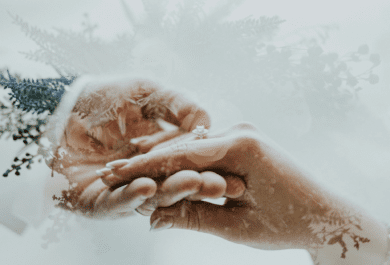By Erika W.
Q&A with the Trade – Peter Yantzer

Peter Yantzer, Executive Director of AGS Laboratories, kindly took time to answer the following questions for Pricescope. We are happy to kick off our Q&A with the Trade with Mr. Yantzer, and we thank him for his candor and generous responses.
Questions for Peter Yantzer
What attracted you to the diamond industry, and what keeps you engaged?
How do you see diamond cut evolving in the future?
With regards to round brilliant cuts specifically, will we see AGSL cut grades changing?
What are your plans for expanding fancy cut grading?
What are the challenges of grading fancies?
What are your top diamond buying tips for consumers?
Could you share a bit about your own diamond jewelry? What do you wear? What jewelry styles do you love?
We all know people when we were growing up who would say “I’m going to be a nurse or a policeman or teacher etc. when I grow up.” They pretty much knew what they wanted to be or do. I never had a vocation or calling. Just didn’t know what I wanted to be or do.
After a four year tour in the United States Air Force, during which time I had gotten married, I knew I needed to get a job when I got out. A friend whose father owned a retail jewelry store told me about the Gemological Institute of America. He told me if I became a gemologist that I could get a good job. So I used my GI Bill and went to GIA. GIA offered me a position in their New York Gem Trade Lab. I was the 7th gemologist on the New York GIA staff in 1973.
Although I learned about gem identification, I gravitated towards diamonds and diamond grading because of their beauty and because I got to use my hands, eyes and mind when grading. Bob Crowningshield and Bert Krashes, legends in our industry, taught me gem identification and diamond grading. So I was lucky to learn from the best. I still grade diamonds today in the lab.
Heading up the AGS Cut Grade Research Project kept me engaged and fascinated for quite a number of years. Developing metrics that help measure what makes a diamond beautiful required a tremendous amount of collaboration with some exceptional individuals. None of the work was easy. Every understanding came after lengthy study, experimentation and testing. “Pulling hen’s teeth” is an apropos description.
Moving into the twilight of my career I frequently think of Richard T. Liddicoat Jr. ( belovedly known as “RTL” by many of us ). Google him if you don’t know who he was. He was a most admirable man and I have always been one of his greatest admirers. So, I try to emulate him or at least my memory of him. If you are older the previous sentence will make perfect sense to you. I just try to stay out of the way and gracefully let the next generation run the show. It’s their time. I still like grading diamonds and doing some cut grade research. And, I enjoy working with new diamond graders and sharing some of my experience and knowledge.
Back to Top
With respect to the standard round brilliant cut I believe we know quite a bit about it. We know what angles and table sizes look pretty to most human beings. We know what digging and painting can do to improve or harm the appearance. In a nutshell:
1. Cut a round brilliant with a pavilion angle around 41 degrees, give or take about a half degree.
2. Cut the crown with the required complementary main angles to “work” with the pavilion angle.
3. Don’t make the upper and lower girdle facets too long or too short.
4. Don’t make the table too big.
5. In general, don’t dig or paint the halves.
6. And if you do this, never underestimate a person’s taste.
The end result will be a diamond that has plenty of brightness, great contrast, high dispersion and low leakage. Will everyone who looks at one of these diamonds like it? Probably not. Human ‘taste’ comes into play and, last time I checked, no one could quantify it.
The evolution has already started. Our contribution has been the development of software tools that can analyze and optimize any facet arrangement. And, it is done in the virtual world. Because of these tools, trial-and-error cutting of diamond rough is really not necessary. We can get anyone with any facet arrangement, not only in the ballpark, but close to home plate. They may choose to cut a few samples close to this to suit their taste.
We work with a number of diamond cutters/designers under non-disclosure agreements. They are trying to develop new facet arrangements and we will model that facet arrangement to find an area or areas of high performance and share the information with them.
Back to Top
I can say emphatically, not likely. ☺
There are at least a couple of reasons why:
1. We have been criticized, and rightly so, for making too many changes too quickly. It was a good lesson to learn because being nimble and quick to change is often thought as being an asset to a company. This is not necessarily so because – like the weakest link in a chain – change tends to happen at the pace of the slowest big player in the game.
2. IMHO our industry is way behind the times. It is what it is. Fortunately our industry is being dragged, kicking and screaming, into the 21st century whether it wants to or not. Thank the information age for that. I still speak to retailers who use our defunct legacy two-dimensional proportion system and have no idea that we changed over to our performance grading system in 2005. There are still jewelry industry individuals that don’t have a fax machine, let alone email. They aren’t necessarily Luddites; they either don’t need them or are afraid to learn about them.
There is still some more to learn about the round brilliant. Specifically, we know some things about the size and number of the virtual facets and how they affect scintillation and fire. I believe that this is a ‘taste’ factor, but it is a very important one. The topic of “Taste” or “Individual Preference” is critical to diamonds because no matter what metric or metrics you apply to try and quantify diamond beauty, there will always be some who disagree. When there are heated disagreements on PriceScope about which stone is better it really is more about ‘taste’. Of course, I am assuming that the stone has a sufficient amount of brightness, reasonable contrast and some amount of fire. But you know what they say about assuming.
Back to Top
I would like to have the system to cut grade any facet arrangement. We have the tools but not sufficient metrics for some of the fancy shapes. From a ‘taste’ perspective fancy shapes are very broad in either appeal or dislike. As an example, there is a story about the Lazare Kaplan Company who, among other things, I believe either invented or popularized the oval brilliant cut. I might be wrong and if so, I apologize. The story is that the firm cut a large number of oval brilliants and mounted them on a board. They then asked a large number of people to pick their favorite. They couldn’t get anywhere close to a consensus.
The challenge is one of attempting to balance the performance – brightness, contrast, leakage and dispersion. The minute you try to balance these factors you are leaving the realm of pure objective measurement and practicing art in some form. The same thing actually occurred with the round brilliant cut. The only difference is that we had much more consensus about what is a beautiful round brilliant to use as a baseline.
Many would agree that brightness is the first and foremost consideration but many fancy shapes aren’t that bright and are still liked and even treasured. There are even some cuts that can be made too bright. Also, most fancy shapes can’t display the amount of fire that a round brilliant can.
No matter how much metrics are refined they will never describe a stone that everyone likes. It’s human nature and differences in ‘taste’ are part of what make us human.
Back to Top
Do your homework. Notice the second half of the word “homework”. If you do, you will get a good sense of the value of the diamond you may want to purchase. Having a good idea of value will allow you to determine whether the price is ‘correct,’ ‘accurate,’ ‘proper,’ or ‘insert-whatever-word-is-appropriate-to-you-here.’ Value and Price are not the same. Only you can decide if the seller is offering you additional benefit(s) or service(s) that makes a price higher than the value worth it to you.
If you don’t have the desire or wherewithal to do the above, consult an expert. I always recommend a member of the American Gem Society. They are dedicated to continuing education and consumer protection. They actually believe in something. And, the American Gem Society is not just an organization where you send “X” amount of dollars annually to put a plaque on the wall of your jewelry store. Work is involved in becoming a member and remaining a member.
A diamond with a report from a second, third or lower tier laboratory, grade-for-grade does not have the same value as a diamond with a report from a first tier laboratory. Unfortunately, consumers are not able to verify this but anyone in the jewelry industry can do so and prove it to you. It’s a fact, period! Spend some time educating yourself on PriceScope and you will know who the top tier laboratories are. You are being conned if you are led to believe that a diamond with a report from a lower tier laboratory has the same value as a stone with a report from a top tier laboratory. Does this mean that the grading from a lower tier laboratory is always wrong? No. It means that over a long period of time the grading from lower tier laboratories is, on average, softer or easier than a top tier laboratory.
Make every effort to actually see the diamond. I mentioned ‘taste’ in the previous questions and it is eminently important. Why buy it if you don’t love it?
Run away from anyone that says “Shop around and come back to me and I’ll give you the best price.” It’s laziness at best and a con at worst. Why didn’t he give you the best price when you first saw him?
In the same vein, don’t ever believe that you are getting great value and great price from anyone who uses deep discounting to sell.
For example, if you see an ad that says “70% Off Sale”, this is what it really means:
If the jeweler’s normal markup is 50% an item that costs him $1000 would be normally sold for $1500. If he discounts it 70% the sale price would be $450. Do you really think anyone in business would sell an item that costs $1000 for $450, the goodness of their heart notwithstanding? Not if they want to stay in business. In order to stay in business anyone must make a profit.
So what is the real value of this diamond? Doing some math we can see that a businessman, any businessman – not necessarily a jeweler, would have to mark that diamond up 333% in order to discount it 70% to sell it at his cost of $1000. The math: $1000 times 333% equals
$3,333. $3,333 minus 70% equals $1000.
Spending more time on PriceScope you will find that diamonds are usually marked up less than the 50% figure mentioned at the beginning of this consumer tip.
Run away from these people as well because they are using deceptive smoke and mirrors to try and make you believe you are getting real value when in reality you are being conned.
Back to Top
I own one diamond. It has AGS Ideal 0 light performance, is ‘H’ color, VS2 clarity and weighs 0.748 carats. It has a high degree of optical symmetry which characterizes ‘hearts and arrows’ diamonds. I bought it 11 or so years ago. I was drawn to the precision of cutting required to make this kind of stone, even though you can’t see the hearts and arrows without a special viewer. The fact that a cutter can place all of the facets on the stone to create the effect still amazes me. I always extend ultimate kudos to diamond cutters because they have to cut diamond with diamond and they can cut to nearly impossible precision. Most people can’t even imagine how difficult that is. The aesthetic of incredible precision spoke to me. Color, Clarity and Carat Weight had nothing to do with my buying decision. It was all about the precision of cutting.
I wear it daily in a Stuller 14K white gold ring.
I really like Art Deco, probably because of the geometric forms. Just like the facets on diamonds!
That’s my story and I’m sticking to it. Find your story and buy a diamond. You won’t regret it.
Peter Yantzer, Executive Director, AGS Laboratories

Discuss this Q&A with Peter Yantzer on the forum













